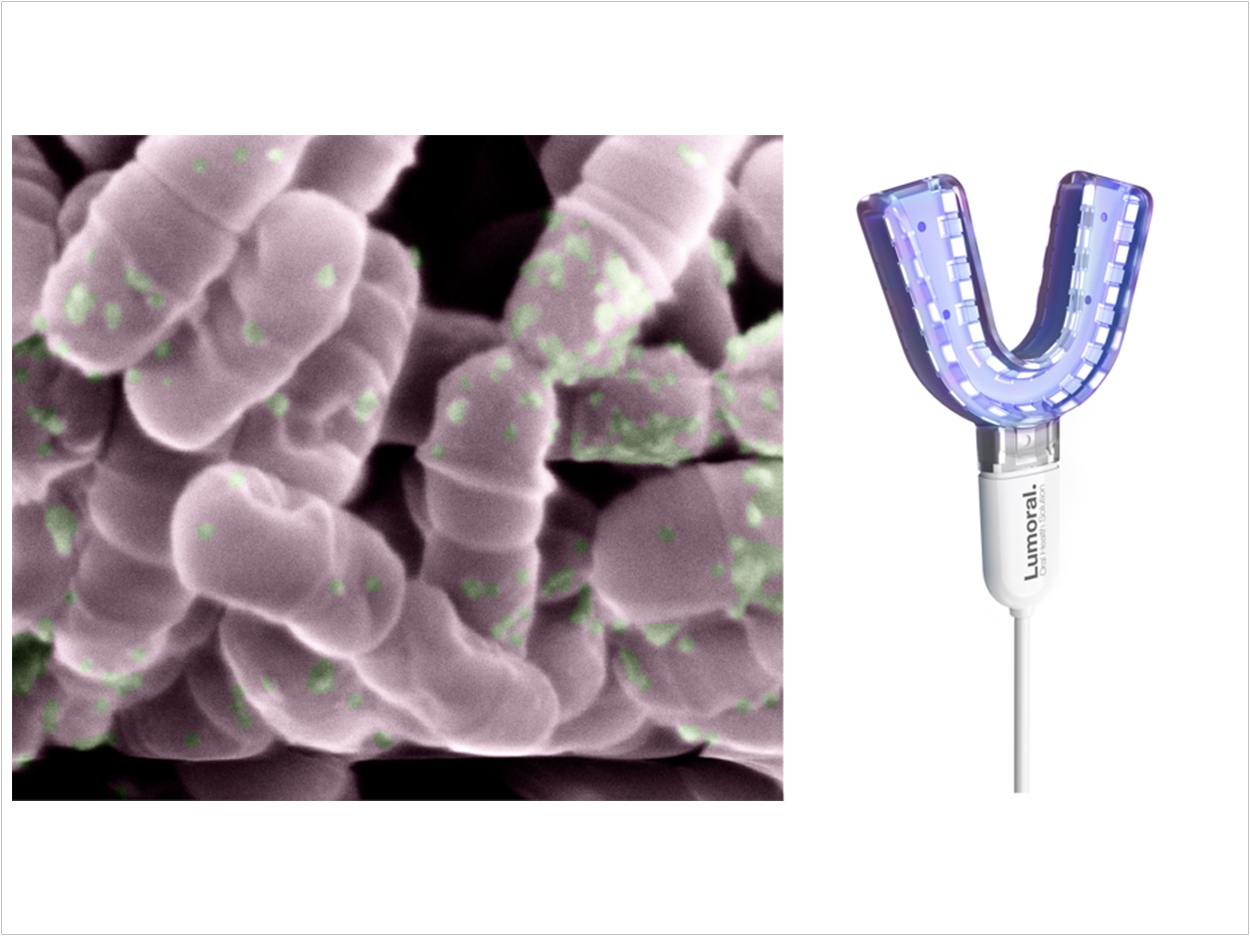
If you want to kill the bacteria that causes caries and gingivitis, try dual-light photodynamic therapy. Founded by researchers from Aalto University and Helsinki University Hospital, Koite Health is launching treatment designed for home use that eliminates Streptococcus mutansand other bacteria, reducing the markers indicating early gingivitis and plaque formation.
“Dental diseases are caused by the combined effect of the bacterial community, and Streptococcus mutansplays a key role in dental caries. For plaque, mutansis a bit like the first violin that starts a concert. It adheres to the tooth first and opens the door for other bacteria,” said researchers Tommi Pätilä, a cardiac surgeon at New Children’s Hospital.
Treatment begins with a mouthwash that includes a light-absorbing compound. Users rinse their mouths with it for 30 seconds so the photosensitive substance sticks to plaque. The substance then is activated with a light activator placed between the teeth. Dual-light therapy is administered to the entire dental area for 10 minutes.
“The photosensitive substance in the effervescent tablet adheres to the surface structures of the bacteria. Red light activates the substance and initiates a chain reaction that kills the bacteria. Antibacterial blue light administered at the same time significantly enhances the effect,” said Pätilä.
The researchers said the treatment only affects the targeted bacteria, and the bacterial flora in the mouth remains diverse. Also, dual-light therapy doesn’t cause any bacterial resistance.
Light has been used in medicine to kill bacteria before. Bacteria living in the mouth, however, can protect themselves from antibacterial blue light by using various sugars to build shelter. Yet they are unable to defend against the combination of the solution and the wavelengths of dual light, which affects the bacteria’s own internal structures.
Pätilä developed the dual-light therapy with Aalto University researcher Sakari Nikinmaa. They met when Nikinmaa and his team participated in the first hospital immersion period of the Biodesign Finland project, where interdisciplinary teams develop technology that can be commercialized to solve medical problems.
Dual-light therapy designed for home use will be launched for consumers in early 2020. Dentists already are familiar with light-activated antibacterial methods in clinical use, the researchers said, but the dual-light process boosts its efficacy significantly. Also, this is the first time that the method will be available for home use, the researchers said.
The product was first tested on human subjects by treating the canine teeth on one side of the mouth once a day while leaving the canine teeth on the other side untreated as a control. There was less plaque formation and other markers of gum disease on the side of the mouth with the treatment.
The researchers emphasized that thorough oral hygiene is still the best way to prevent dental diseases. Dual-light therapy is particularly beneficial to people with aggressive strains of dental bacteria, chronic diseases, or problems handling dental hygiene due to, for example, arthritis, the researchers said. Other special groups include children and people with cancer.
“Although dental care is generally better than earlier, the cost of oral diseases is around $442 billion globally,” said Nikinmaa. “We especially hope that the product we’ve developed will help maintain the oral health of cancer patients who are undergoing intensive treatments and prevent gingivitis in diabetics. Diabetes causes a tenfold increase in the risk of gingivitis. The product also is suitable for daily tooth cleaning and maintenance of oral health.”
The study, “Dual-Light Photodynamic Therapy Administered Daily Provides a Sustained Antibacterial Effect on Biofilm and Prevents Streptococcus Mutans Adaptation,” was published by bioRxiv.
Related Articles
Antimicrobial Photodynamic Therapy for Periodontitis
Photodynamic Therapy for Periodontal Diseases
Photodisinfection: The Future of Periodontal Therapy


